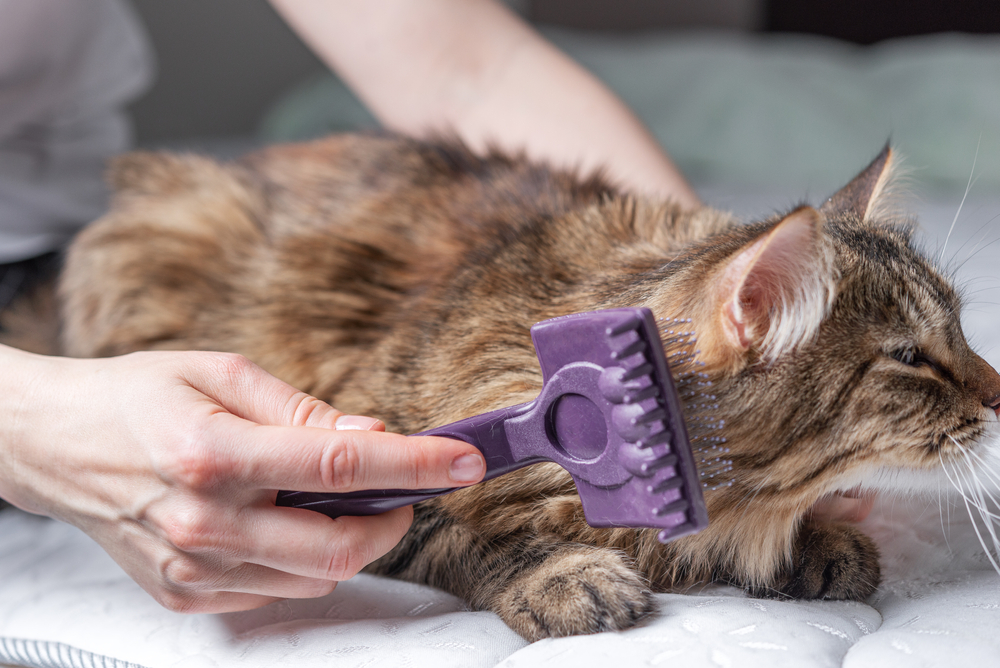Does your pet scratch and bite their skin? Have you noticed rashes, raised bumps, or other skin problems? Many cats and dogs are susceptible to skin disorders affecting their health, comfort, and general well-being. From skin scaling and hot spots to chronic itchiness and hair loss, our Caldwell Animal Hospital team diagnoses and treats several skin issues in pets. Learn about the most common dermatology disorders your four-legged friend can contract and how these conditions are treated.
Prevalent skin issues in pets
If you’ve ever had poison ivy or a sunburn, you know how uncomfortable skin problems can be. Dermatological conditions are the most common reasons for veterinary visits. Prevalent skin disorders in pets include:
- Flea allergy dermatitis (FAD) — FAD is a hypersensitive reaction to flea bites. A single flea bite can trigger a severe allergic response in pets who are sensitive to flea saliva. Signs include intense itching, skin redness, hair loss, scabs, and hot spots.
- Treatment: FAD treatment includes regular flea control using our veterinary-recommended flea preventives, household flea control to eliminate fleas and their eggs, and prescribed medications, such as antihistamines or corticosteroids, to manage your pet’s itching and skin inflammation.
- Hot spots (i.e., acute moist dermatitis) — These raised lesions are localized areas of inflamed and infected skin, often caused by scratching, licking, or biting at an itch. Signs include red, moist, hot, and painful lesions that can rapidly enlarge.
- Treatment: To minimize hot spots, our Caldwell Animal Hospital team clips the hair around the lesion, cleans the lesion with antiseptic solutions, applies topical antibiotics, and, in severe cases, prescribes systemic antibiotics and anti-inflammatory medications.
- Ringworm (i.e., dermatophytosis) — Ringworm is a fungal infection that affects pets’ skin, hair, and nails. This disease is highly contagious and can spread to people, so washing your hands and using gloves when handling your infected pet is essential. Pets’ ringworm signs include circular, scaly bald patches, broken hairs, and skin inflammation. Lesions may appear red and itchy.
- Treatment: Ringworm is treated with topical antifungal creams, medicated shampoos, and oral antifungal medications. Environmental decontamination is also crucial to prevent reinfection.
- Mange — Microscopic mites that burrow into pets’ skin cause mange. Two mite types cause mange: sarcoptic mange (i.e., scabies) and demodectic mange (i.e., demodicosis). Mange signs include intense itching, redness, hair loss, scabs, and sores. Demodectic mange may present as localized patches or widespread skin involvement.
- Treatment: Mange is treated with veterinary-prescribed miticides, medicated baths, and, for secondary infections, antibiotics. Treating the environment is also important to eradicating mites. You need to deep clean your home, launder all bedding, and replace your pet’s beds with new ones.
- Allergies — Pets can suffer from allergies to various substances, including food ingredients, environmental allergens, such as pollen and dust mites, and contact allergens such as certain shampoos and grasses. Pets’ allergy signs include itching, scratching, licking, ear infections, and gastrointestinal (GI) upset. An allergic pet’s skin may be red, inflamed, or have a secondary infection.
- Treatment: Medications, including antihistamines and corticosteroids, are often prescribed to treat allergies, along with immunotherapy—allergy shots—for environmental allergies. For food allergies, a hypoallergenic diet is recommended.
- Bacterial and fungal infections — Secondary bacterial or fungal infections can occur as a result of persistent scratching or an injury, including abrasions or wounds. Infection signs may include redness, swelling, bumps, crusting, and a foul odor.
- Treatment: Our veterinarian can prescribe topical or oral antibiotics for bacterial infections and antifungal treatments for fungal infections. We will also address an infection’s underlying cause to prevent recurrence.
- Seborrhea — This skin disorder, characterized by sebum overproduction, leads to oily, scaly skin. Seborrhea can be primary—genetic—or secondary to other conditions. Seborrhea results in greasy, flaky skin with an unpleasant odor, typically affecting a pet’s back, face, and thighs.
- Treatment: Our team prescribes medicated shampoos to reduce oil and flakes, addresses any underlying conditions, and recommends dietary supplements such as omega-3 fatty acids.
Maintaining skin health in pets

Maintaining your pet’s skin health involves regular grooming, a balanced diet, and prompt attention to skin problem signs. Regular veterinary exams are necessary to detect and treat skin issues early. In addition, using our veterinarian-recommended flea and tick preventives can significantly reduce your pet’s parasitic skin problem risks.
Understanding these common skin problems and how to manage your pet’s signs can help ensure your furry friend leads a comfortable, healthy, itch-free life. If you are concerned about your pet’s skin, schedule an appointment with our Caldwell Animal Hospital team.







Leave A Comment